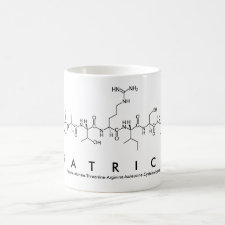
Authors: Eersels K, Van Grinsven B, Vandenryt T, Jiménez-Monroy KL, Peeters M, Somers V, Püttmann C, Stein C, Barth S, Bos GMJ, Germeraad WTV, Diliën H, Cleij TJ, Thoelen R, De Ceuninck W, Wagner P
Article Title: Improving the sensitivity of the heat-transfer method (HTM) for cancer cell detection with optimized sensor chips.
Publication date: 2015
Journal: physica status solidi (a)
Volume: 212
Issue: (6)
Page numbers: 1320-1326.
DOI: 10.1002/pssa.201431709
Abstract: In this article, we increased the sensitivity of the heat-transfer method (HTM) for the detection of breast cancer cells (ZR-75-1 cells, see figure) in phosphate buffered saline (PBS). The effect of small technological changes on the limit of detection (LoD) of the methodology was examined. To this extent, polished aluminum substrates with a mirror finish were used, replacing the unpolished chips used in previous studies. These chips were coated with a polyurethane layer and imprinted for the target cell type, creating a so-called surface imprinted-polymer (SIP). Binding of target cells to the SIP resulted in an increase of the thermal resistance at the solid-liquid interface under study. Background thermal resistance measurements were performed with polished and unpolished aluminum substrates. In addition, the effect of using silver paste as thermal coupling between the aluminum chip and the copper heat provider was analyzed. The results of these experiments reveal that optimal thermal contact is achieved when directly coupling the copper heat provider to the polished side of the aluminum substrate as evidenced by a decrease in the baseline thermal resistance. In addition, noise levels on the heat-transfer resistance (Rth) signal decreased by a factor in the optimal configuration. Dose-response curves were obtained using the optimized methodology and were compared with results obtained with the original substrates. These quantitative experiments demonstrated an improvement of the LoD by approximately thirty percent. ZR-75-1 cells applied onto a home-made rubber stamp
Template and target information: breast cancer cells, ZR-75-1 cells
Author keywords: Aluminum, Biosensors, cancer cells, heat-transfer method (HTM), polishing



Join the Society for Molecular Imprinting

New items RSS feed
Sign-up for e-mail updates:
Choose between receiving an occasional newsletter or more frequent e-mail alerts.
Click here to go to the sign-up page.
Is your name elemental or peptidic? Enter your name and find out by clicking either of the buttons below!
Other products you may like:
 MIPdatabase
MIPdatabase









